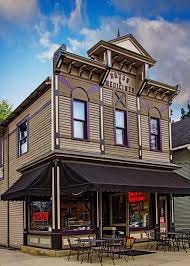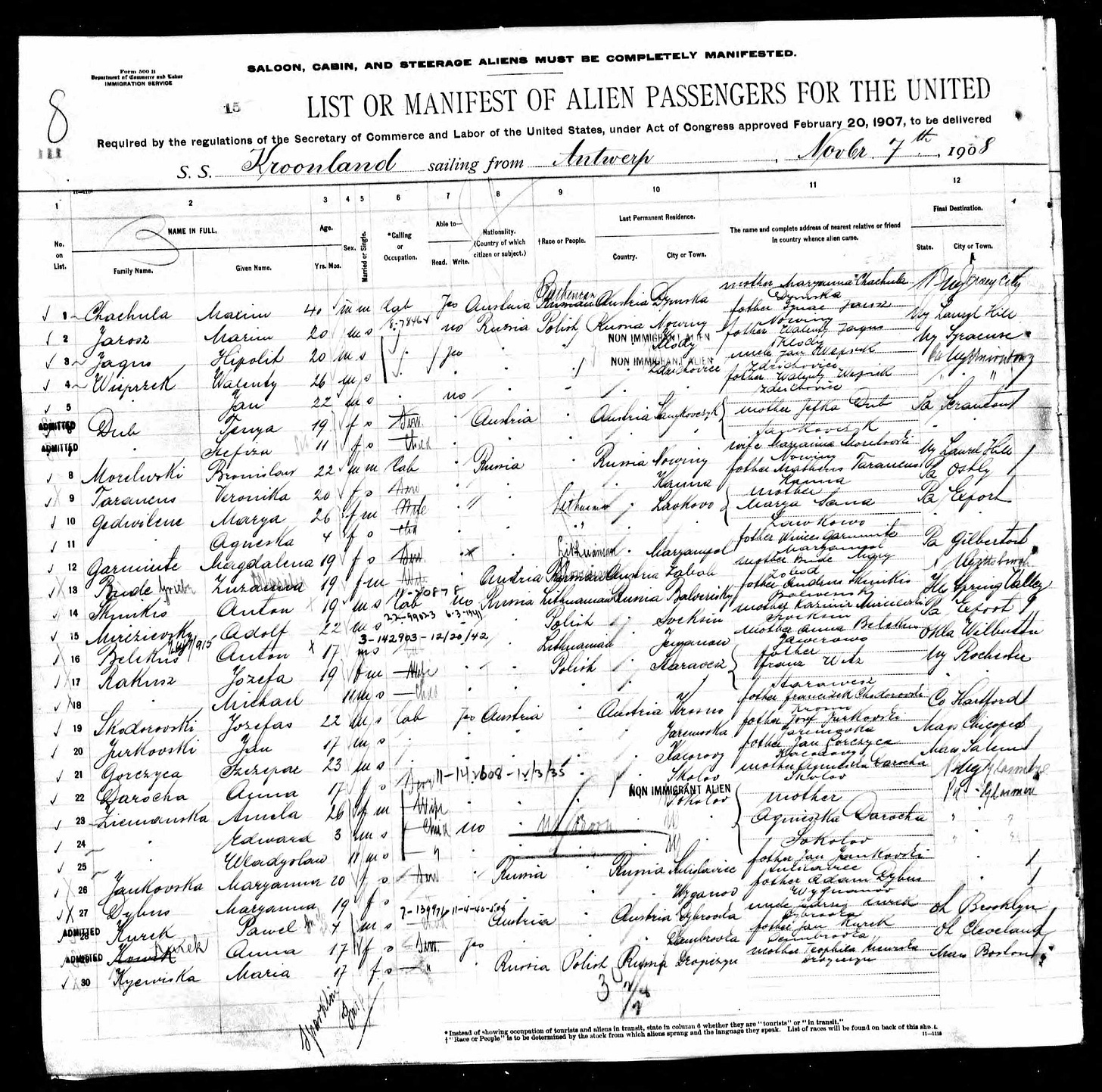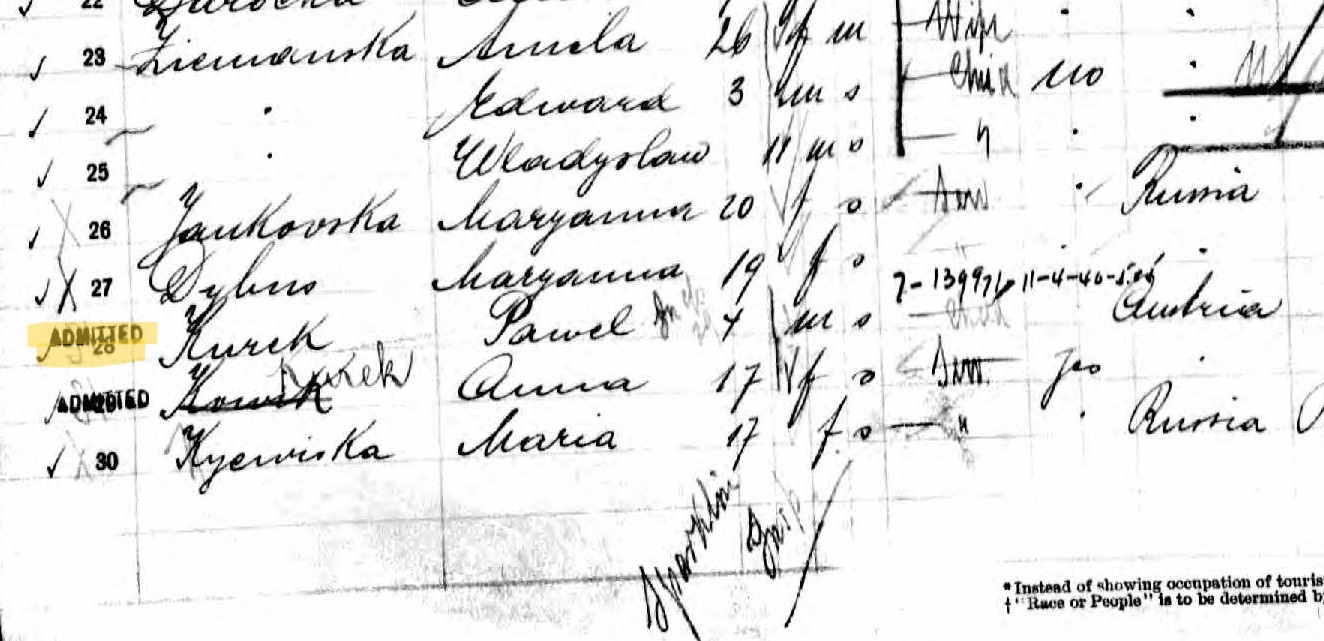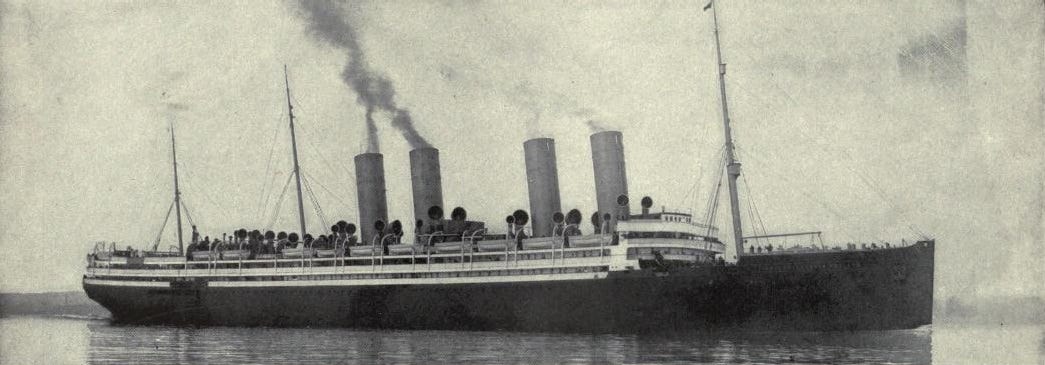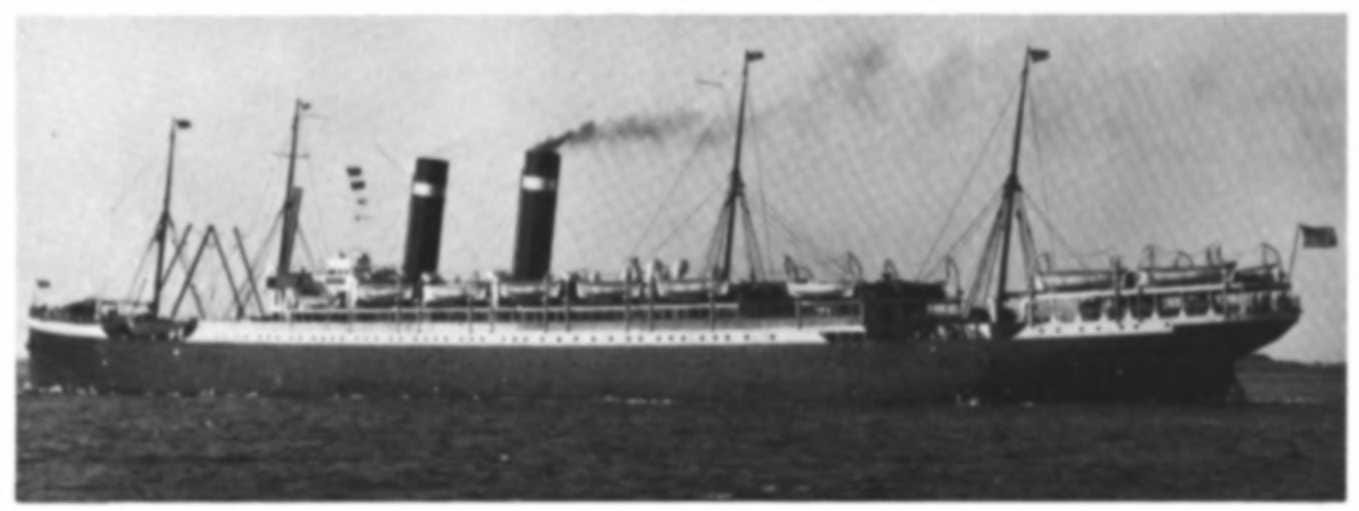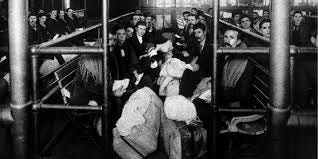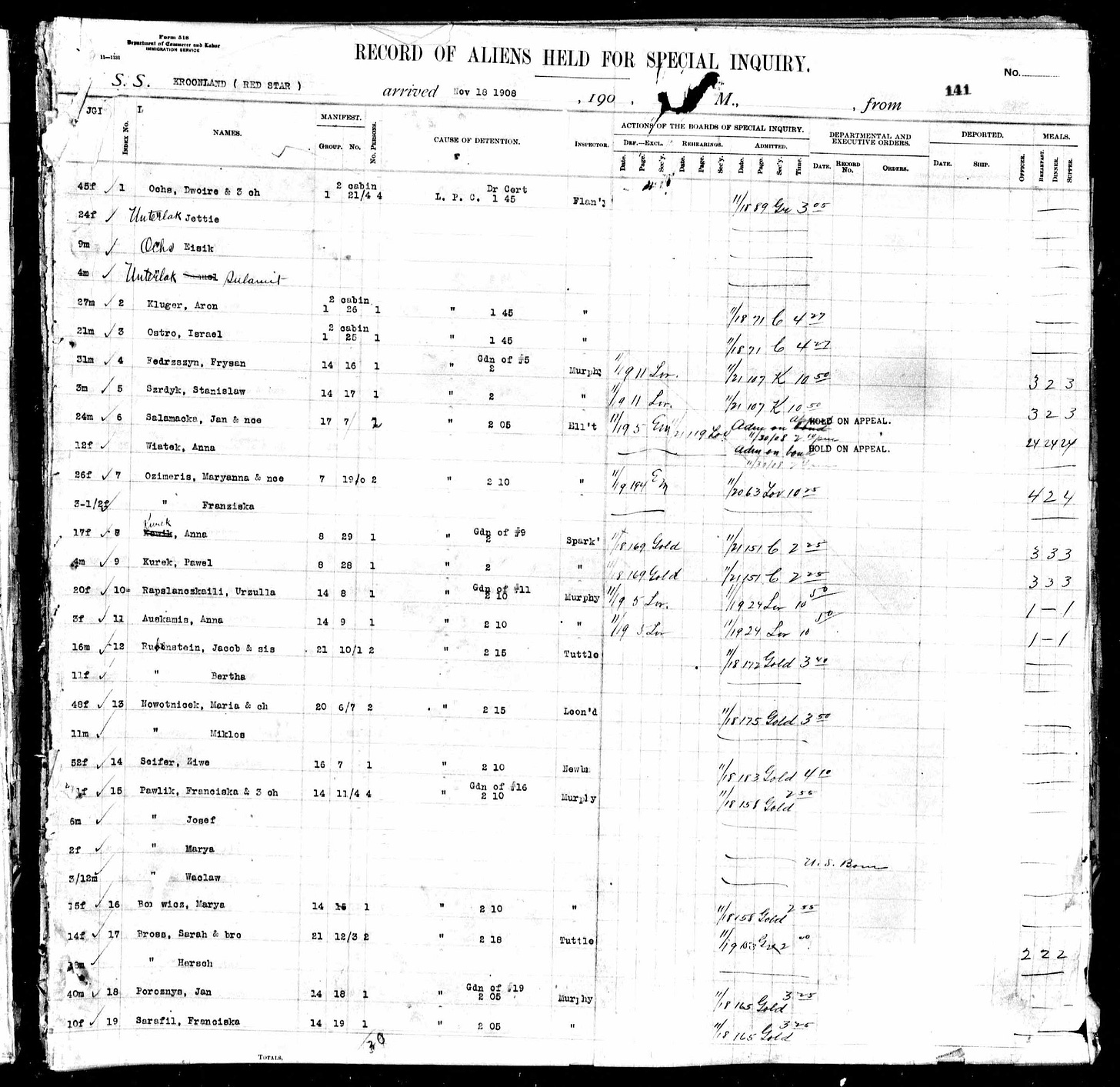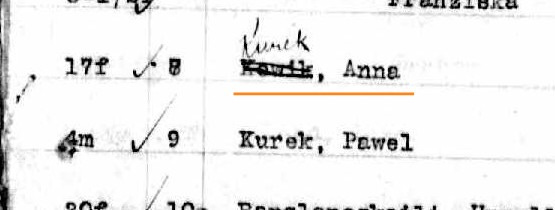When you spend hours researching other people's family histories, you begin to wonder, "Why have I not found interesting stories in my family tree? "The simple answer is that you're not spending enough time on your own research. Hence, you don't know as much about your family as you do your clients'.
When genealogy is your career, your time and attention are focused on the lives of your client's ancestors—not your own kin.
That is why, when I told my family I was dedicating time to writing about our family on Substack, they were elated. Finally, they would (possibly) get some answers to their Family History questions, and I would get some answers, too!
Which is why, I can’t wait to dive back into The Branch that Time Forgot and uncover what thrilling discoveries await me next!
Part II – Ellis Island
With the Kurek family line – the two things I had to go on were the two stories I was told:
Your grandparents met on a sibling double date: two sisters and two brothers.
My aunt lived behind that drugstore (which is now a coffee shop)
With so little to go on, I've spent a multitude of hours—years, really —researching typical leads and thinking outside the box to find answers. Over time, I finally decided to use a combination of Genetic Genealogy and Traditional Genealogy. That was when I finally began to uncover information about the Kurek Family Branch.
But that was later in my journey. Before, I was able to convince my Father to take a DNA test with Ancestry, and before, I accept that I also had to take another one. (First with 23andMe and then AncestryDNA)1 – At the start, I had pinned my hopes on traditional genealogy. Luckily, it was not all for not. Those dreams of finding a viable paper trail led me to the very first document I ever located that was explicitly about my great-grandmother.
It was the Passenger List for the SS Kroonland. Her name was on line 29, near the bottom of the form: ANNA KUREK. The last name was initially spelled KEWIK, but it was crossed out, and KUREK was written over it.
This was also the first time I ever saw the name Pawel Kurek.
My initial reaction was that I had found a great grand uncle. I'm sure I even told my family as much.
ME - "I found great-grandma and her little brother!!"
FAMILY - "An uncle! How wonderful!"
(To be honest, I don't remember how they reacted. I'm choosing to pretend they were as excited as I was, but this search has been complicated for multiple reasons, including family avoidance.)
I was elated! Though it would take me a while to decipher the handwriting and more time to understand that little four-year-old Pawel wasn't my great-granduncle but a cousin, I noticed the truth once I tricked my brain into understanding the script on the digitized page. There, in black and white, Anna had named her father Jan Kurek, and Pawel named his father Pitor Kurek. The simple math was: different fathers obviously equal non-siblings.
Still, at the beginning of this journey, their relationship was the least of my worries. My biggest concern was the handwriting. I was new to genealogy and reliant on the OCR handwriting technology that Ancestry uses. The information was jumbled and worse, missing altogether.
While I could decipher a lot of the info, so much was missing. For example, "Last Permanent Residence," "The name and complete address of the nearest relative or friend in country when alien came," and "Whether going to join a relative or friend; and if so, what relative or friend, and his name and complete address." These sections were basically chicken scratches clearly written by a person on board the ship while dealing with hurricane conditions.
Oh, and then there was the section: Whether going to join a relative or friend; and if so, what relative or friend, and his name and complete address.
An eraser mark was directly in the middle of the paragraph, listing who Anna and Pawel were meeting and where they were joining them.

But I was undaunted. I knew that passenger lists, depending on the year of travel, could contain a slew of facts and information—when legible and un-erased. So I pushed forward.

These days, when you take a day trip to Ellis Island, you climb on a ferry either at Battery Park in Manhattan or Liberty State Park in New Jersey. Modern ferries usually carry 400 - 800 passengers, depending on which one you buy tickets for. In 1908 the SS Kroonland could fit 1,419 people, including the crew. The third class, better known as Steerage – where my great-grandmother and her charge were, could hold 626 people by itself.
Meaning that the steerage class of the Kroonland was around the equivalent of a mid-sized ferry to Ellis Island by today's standard.
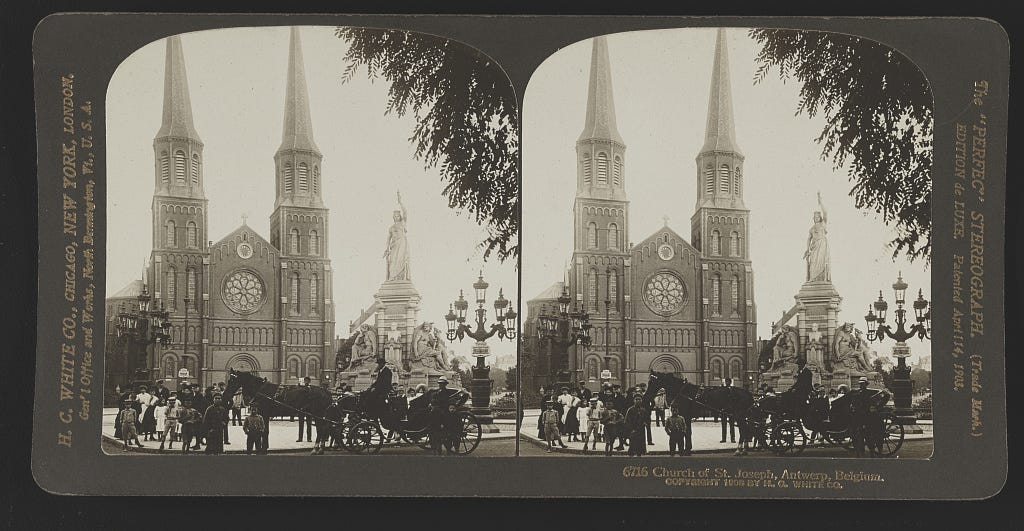
When Anna and Pawel left Belgium and traveled to New York City, the United States was in the throes of the Third Wave. Between 1880 and 1914, Ellis Island saw over 20 million immigrants pass through its gates. Only a year and a half before my ancestors arrived on 18 November 1908, Ellis Island had its busiest day in all the years it was open. It was 17 April 1907, and the immigrant inspection and processing station—the LARGEST in the United States—processed 11,747 immigrants.
That is the equivalent of 10 Kroonland Ships passengers, leaving 127 other people to process. About half the crew of the Kroonland.
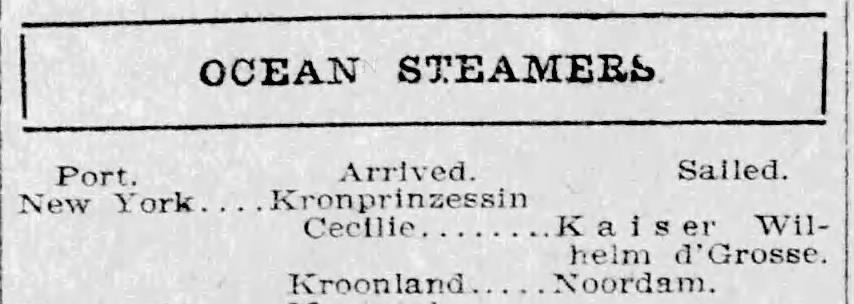
On 18 November 1908 – there were two Ocean Steamers in port:
Kronprinzessin Cecilie (which held 1888 first, second, and steerage class passengers in 1908)
Kroonland (which held 1162 first, second, and steerage class passengers in 1908)
In 2025, it is exciting to visit Ellis Island. It is interesting to see what our ancestors saw when they arrived. Yet, there is no way we can't really understand what the experience was like for our kin. That day, 18 November 1908, there were roughly 3050 passengers offloading both ships. The first and second class passengers would have been processed on board the prospective vessels, but that wasn't so for the steerage class.
Leaving the haul they called home for two weeks must have felt like a dream. Solid ground under their feet, briny sea air brushing their faces—pushing away the smells of engine fumes, soiled clothes, and unwashed bodies. Myriad languages chattered, keeping loved ones nearby as process agents shouted to keep arrivals in line.
Each third–class passenger—including Anna and Pawel Kurek—would have been instructed to carry their belongings into the main building, up a long staircase, and across the great hall. There, they would have been physically inspected. A doctor would have examined their eyes and skin, listened to their hearts, and checked for fevers or flu.
After the exam, if the person needed further examination, the doctor used chalk to mark their clothing, making it easy to remember why the immigrant was detained in the first place.
H indicated heart trouble
L meant they were suspected of lameness
X suggested feeble-mindedness
There were more, but you get the gist.
Anyone with a mark was removed from the line and taken to a cage, where they remained until the doctors were free to inspect them further. Most people moved to the cages were not accepted into the United States.
In 1907, the United States passed a new Immigration Act. Part of this act included the exclusion of persons who were considered "idiots, imbeciles, feebleminded persons, epileptics, insane persons.” It also stated Immigrants with tuberculosis or any "loathsome or dangerous contagious disease" were also barred from entry. This meant that anyone who ended up in one of those cages would most likely be sent back to Belgium, from once they came, on the ocean streamliners dime.
Luckily, my 17-year-old great-grandmother Anna and her four-year-old companion, Pawel, passed the health inspection. This means they were sent to the next stop on their Ellis Island journey, which meant being interviewed by inspectors.
This is when their journey was paused for three days…
When you locate a passenger list on a site like Ancestry or FamilySearch, it’s easy to locate one or two pages in the center of the massive passenger list and assume that it is. But you should always check the end of the file. Especially if, like my ancestors, you see S.I. stamped next to their names.
S. I. = Special Inquiry.
My ancestors have a faint S.I. stamped next to their names, and when I checked the final pages of the SS Kroonland Arrival Passenger and Crew List, I found them in detention waiting for a special inquiry.
Under Cause of Detention – there are three letters: L. P. C.
Likely Public Charge.
The label of Likely Public Charge meant that the inspector at Ellis Island, a man named Spark, felt there was a possibility that Anna and Pawel could become a burden to taxpayers due to economic status, health issues, or other factors. If that was the case, they would be denied entry into the U.S. – which is why it was determined there would be a Special Inquiry.
Anna and Pawel would have to appear before a board of three men, the BSI—Board of Special Inquiry. Those three men would have had a hearing where evidence would be presented by both sides, including the immigrant's family, detailing the immigrant's beliefs, economic conditions, and medical status.
There could be a lot of back-and-forth during the hearing. If the BSI refused entry, the immigrant could start an appeal. During that time, the immigrants—in my case, Anna and Pawel—would have remained in the detention center, waiting for their next run at the Board of Special Inquiry.
So, there were my ancestors, locked up in a detention center on Ellis Island. They had left the dank conditions of steerage to be confined into a room that was often overcrowded and unsanitary. I’ve read accounts where, “crowded, drearily dark, unsanitary, and foul-smelling."
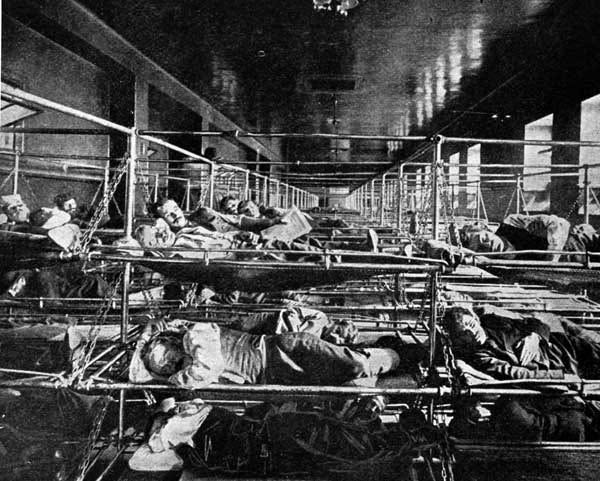
After two weeks of confinement aboard the SS Kroonland ocean steamship, my great-grandmother, Anna Kurek, and her ward, a four-year-old boy named Pawel Kurek, were confined a second time – this time at Ellis Island. Due to the reason of L.P.C. – Likely a Public Charge.
But there are a couple things I haven't mentioned yet.
First, the 1907 Immigration Act made it law that children under 16 were not permitted entry into the country without a parent.
According to the ship manifest, Anna said she was 17 years old. The only way she could ever gain entry for herself and Pawel was if she was 17, but I don't think she was. Over the years, I've found conflicting information about her age—including her death certificate, which states she was 38 when she died.
If she had been 17 in 1908, she should have been 40 when she died.
Anna most likely lied about her age to buy passage to the United States. She was about fifteen when she left her home in Poland to come to the U.S. with Pawel.
I think about that a lot. I think about the motivation needed to persuade a 15-year-old to seek passage across the Atlantic Ocean with a four-year-old in her charge. The experience must have been harrowing from start to end.
I also think about her physical description on the ship manifest. Anna is listed as 4'11” tall. She was a small girl, lying about her age, traveling with an even smaller boy.
It's easy to see why Inspector Spark labeled them LPC.
The second fact I've omitted is even more important than her age. Anna was literate.
Besides the passenger list under "Read and Write," being marked, Yes and Yes, there is further proof. When Anna purchased her ticket, the shipping agent wrote her name as Kewik, which was crossed out and rewritten as Kurek.
This leads me to believe that Anna noticed the misspelling and corrected the agent.
So, when she and Pawel found themselves standing in front of the BSI, Anna could have better represented them. She would not have been reliant on a translator to read the documents to her—she could read them herself.
This 4'11” Polish teenager was able to advocate for herself and Pawel.
I assume that is why, after three days in detention, Anna and Pawel Kurek were released from Ellis Island and made their way to Cleveland, Ohio. Pawel was to join his father, Pitor Kurek, in Lakewood, Ohio.
And, Anna?
She was to join her brother-in-law: Stanislaw Moskla, and her sister Tekla Kurek Moskal in Cleveland, Ohio. She would live there briefly before going to work for a man named Joseph Neuman.
But I'll get to all of that next time.
To learn more about Genealogy by Aryn - head over to GenealogybyAryn.com, stop by and say hello on Bluesky - Instagram - Facebook - YouTube
Be sure to check out my Etsy Shop and stop by my Genealogy Shop.
Looking to learn more about writing your family history? Check out From Research to Novel!
For more information about my Genealogical Services visit GenealogyByAryn.com or email me at aryn.genealogy@gmail.com. For more information on Writing Services - visit ASYounglesAuthor.com
I also uploaded to Family Tree DNA, GEDmatch, and MyHeritage






